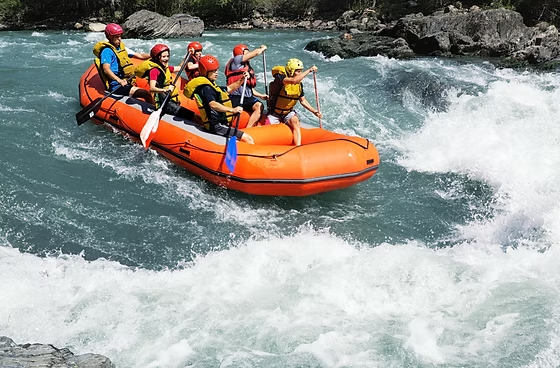The Hudson River is one of the most iconic waterways in the United States, stretching over 300 miles from the Adirondack Mountains in upstate New York to the Atlantic Ocean in New York City. Steeped in history and natural beauty, the Hudson River has played a crucial role in the development of New York and the surrounding region.
This article explores the history, environmental significance, and must-see attractions along the Hudson River, offering insights into why it remains a vital part of America’s cultural and natural landscape.
The History of the Hudson River
The Hudson’s River has a rich history dating back thousands of years, from its early indigenous inhabitants to its role in American colonial and industrial history.
1. Indigenous Peoples and Early Exploration
- The Hudson’s River Valley was originally inhabited by the Lenape people, who used the river for fishing, trade, and transportation.
- In 1609, English explorer Henry Hudson sailed up the river while working for the Dutch East India Company, claiming the territory for the Dutch.
- The river was originally called the North River by early Dutch settlers, but it eventually took the name Hudson River after Henry Hudson.
2. Colonial and Revolutionary Era
- The Hudson River played a strategic role during the American Revolutionary War.
- The British sought to control the river to divide the American colonies, leading to key battles like the Battle of Saratoga.
- The river’s deep waters allowed for early commercial shipping and trade, fueling the growth of cities along its banks.
3. Industrial Revolution and Transportation
- The opening of the Erie Canal in 1825 connected the Hudson’s River to the Great Lakes, turning New York City into a major port city.
- Industrialization along the river led to the growth of industries like manufacturing, shipbuilding, and trade.
- The Hudson River became a major transportation route for goods and people, shaping the economic development of the Northeast.
Attractions Along the Hudson River
The Hudson River is lined with historic towns, scenic landscapes, and cultural landmarks that attract millions of visitors each year.
1. The Statue of Liberty and Ellis Island
- Located at the mouth of the Hudson’s River, the Statue of Liberty is one of the most recognizable symbols of American freedom.
- Nearby Ellis Island served as the primary immigration station for millions of immigrants arriving in the United States from 1892 to 1954.
2. The Hudson River Greenway
- The Hudson River Greenway is a network of parks, trails, and bike paths that follow the river’s edge through Manhattan and beyond.
- It provides stunning views of the river, the New York City skyline, and landmarks like the George Washington Bridge.
3. West Point Military Academy
- Founded in 1802, West Point is the oldest continuously occupied military post in the United States.
- The academy sits on a strategic bend of the Hudson’s River and offers tours of its historic campus.
4. Sleepy Hollow and Tarrytown
- The village of Sleepy Hollow is famous for Washington Irving’s tale, The Legend of Sleepy Hollow.
- Tarrytown, located nearby, features the historic Philipsburg Manor and the Tarrytown Music Hall.
5. Bear Mountain State Park
- Bear Mountain offers hiking, picnicking, and breathtaking views of the Hudson River.
- The park includes a section of the Appalachian Trail and a historic lodge.
6. Hudson Valley Wineries and Farms
- The Hudson Valley is home to some of the oldest wineries in the country, including the Brotherhood Winery (established in 1839).
- The region also features farm-to-table restaurants, orchards, and farmers’ markets.
Environmental and Ecological Importance
The Hudson’s River is not just a historic and cultural landmark—it also supports a diverse ecosystem.
1. Estuary and Tidal River
- The Hudson River is a tidal estuary, meaning that ocean tides push saltwater into the river as far north as Troy, NY.
- This creates a unique habitat where freshwater and saltwater species coexist.
2. Wildlife and Conservation
- The river supports a variety of fish, birds, and plant species.
- Efforts to restore the river’s ecosystem have led to increased populations of striped bass, sturgeon, and bald eagles.
- Organizations like Riverkeeper and the Hudson’s River Estuary Program work to protect the river’s water quality and natural resources.
3. Pollution and Cleanup Efforts
- Industrial pollution in the 20th century severely damaged the Hudson River’s ecosystem.
- Major cleanup efforts, including the removal of PCBs (polychlorinated biphenyls) by General Electric in the early 2000s, have helped to improve water quality.
- The Clean Water Act and other environmental regulations have played a key role in the river’s recovery.
The Hudson River’s Role in Modern New York

Today, the Hudson River remains a vital part of New York’s economy, culture, and recreation.
1. Transportation and Trade
- The Hudson’s River continues to be a major route for shipping and trade.
- The Port of Albany and the Port of New York and New Jersey handle millions of tons of cargo each year.
2. Tourism and Recreation
- River cruises, kayaking, and paddleboarding are popular activities along the Hudson River.
- The annual Hudson River Valley Ramble celebrates the region’s history and natural beauty with events and guided tours.
3. Real Estate and Development
- Waterfront properties along the Hudson River have become highly desirable.
- Major residential and commercial developments have transformed former industrial sites into luxury apartments and office spaces.
Interesting Facts About the Hudson River
The Hudson River is 315 miles long, flowing from Lake Tear of the Clouds in the Adirondack Mountains to New York Harbor.
The river is named after Henry Hudson, who explored it in 1609.
The Hudson River is one of the few rivers in the world that flows both north and south due to tidal influence.
The river’s deepest point is 216 feet near West Point.
The Hudson River Valley is considered the birthplace of the American environmental movement.
Final Thoughts
The Hudson River has shaped American history, culture, and industry for centuries. From its early use by indigenous tribes to its modern role as a hub for transportation and recreation, the Hudson River remains a vital part of New York’s identity.
Whether you’re interested in history, outdoor adventures, or simply taking in the scenic views, the Hudson River offers something for everyone. Its rich heritage and natural beauty continue to inspire and captivate visitors from around the world.
Stimulus Checks Coming Soon: Who Qualifies and How Much to Expect






